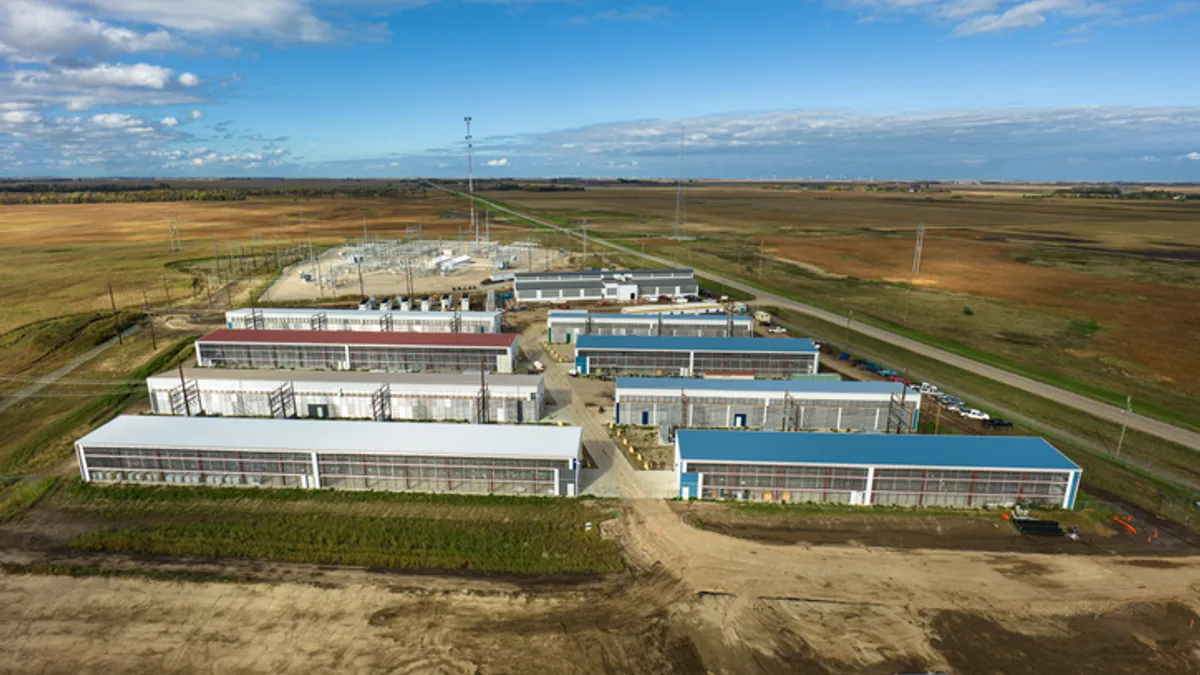The U.S. Department of Energy wants to reverse an Obama-era rule affecting efficiency standards for certain types of lightbulbs. The comments on the proposed rule, due earlier this month, show plenty of disagreement, but one thing is clear: this will wind up in court.
DOE is proposing to reverse a 2017 decision to expand the types of bulbs covered under stronger standards. The agency is not considering this as a rollback of efficiency standards after determining that the definitions were broadened illegally.
Billions of dollars in savings, less wasted energy and reduced carbon emissions are on the line.
The fight involving DOE, lighting manufacturers and efficiency advocates "may look like 'process,' but the substance, at the end of the day, is energy efficiency, savings, carbon emissions and customer choice," Daniel Bresette, vice president of policy at the Alliance to Save Energy (ASE), told Utility Dive.
Weighing efficiency changes from the Obama administration
In 2017, as the Obama administration was on its way out, the DOE widened the range of bulbs that must comply with a second set of energy efficiency standards, set to go into effect in 2020. The change affected general service lamps (GSL), as opposed to general service incandescent lamps (GSIL) — the standard bulbs found in most homes, which were covered under initial lightbulb standards phased in between 2012 and 2014. GSIL standards required energy savings of 25% to 30%.
The second phase of standards would increase savings for a typical household to about $180 per year by 2025, according to the Appliance Standards Awareness Project. That's due to more bulbs being covered and so-called "backstop" standards that efficiency advocates say were triggered when DOE missed a key deadline, to expand definitions without setting a standard.
Congress included a backstop in the efficiency standards legislation designed to push manufacturers towards a long-term efficiency target of at least 65% to 70% savings, and a key argument is whether that backstop has been triggered. DOE's proposed rule could be illegal if it is determined as a reversal of energy efficiency standards.
[In 2017, DOE] "assumed powers not granted to them by Congress, they specifically changed the definitions and assumed facts not in evidence."
Michael Weems
Vice president of government engagement, American Lighting Association
The American Lighting Association (ALA) argued in their comments — in support of DOE's proposed rule — that withdrawing from the January 2017 GSIL and GSL definitional changes "does not constitute as backsliding, as no conservation standards are affected."
"Moreover, ALA agrees that no backstop energy standard has been imposed," the group said, adding that it "encourages DOE to bring clarity to the market by highlighting this point."
According to the DOE's proposed rule, the agency has "determined that the legal basis underlying" the revised definitions published in 2017 "misconstrued existing law."
DOE "made clear in the rule that it was not undertaking the statutory analysis required to develop an energy conservation standard," the agency wrote.
Lighting manufacturers echoed that position.
"From a legal perspective, what DOE did in January 2017, DOE didn't have the legal authority to do," Michael Weems, ALA vice president of government engagement, told Utility Dive. "They assumed powers not granted to them by Congress, they specifically changed the definitions and assumed facts not in evidence ... ALA is supportive of what DOE is doing to simply correct a mistake they made. This has nothing to do with standards."
Facing utility protests
Electric utilities, a group with a major stake in energy efficiency, also weighed in. Dozens of major investor-owned utilities have opposed and urged DOE to rescind its proposal, which they say would exclude from standards bulbs used in 2.7 billion U.S. sockets.
"We know that efficiency improvements reduce the amount of infrastructure we need to build, improve the reliability of supply, and lower customer costs," a group of utilities wrote in joint comments. "For these reasons, we support common-sense energy efficiency standards, including the Jan. 1, 2020 standard now slated for light bulbs."
The group includes about 36 utilities, from the New York Power Authority to Southern California Edison to Hawaiian Electric.
"The 2020 standard for lightbulbs should remain applicable to all common household lightbulbs, and efficiency standards for other products should not be delayed," they said.
Debate on triggering the backstop could lead to legal action
ASE and other efficiency advocates have commented on the proposed rule to oppose an alleged regulatory rollback.
"I think the statute is crystal clear," Bresette said. "The backstop has been triggered."
Weems said he is frustrated by how efficiency advocates are framing the fight. "The NGOs and other groups out there are mischaracterizing this. ... For a lot of them, this is a way to fundraise," he said. "This is not a rollback of anything, this is DOE correcting a mistake."
The disagreement will almost certainly lead to litigation, although there will be little discussion over actual standards (the backstop triggers a standard of 45 lumens/watt for GSLs) and more about the process of enacting them.
"...NRDC is exploring all options, including litigation, to defend these critically important standards that will save consumers billions of dollars and prevent massive amounts of pollution."

Noah Horowitz
Director of the Center for Energy Efficiency Standards, Natural Resources Defense Council
ASE is not likely going to be the organization that sues the federal government. "The Alliance is not especially litigious," said Bresette. "But my expectation is, the DOE would like to see a final rule sometime in the next couple of months ... within seconds of it being published, it goes to court."
The Natural Resources Defense Council (NRDC) and Earthjustice, which have experience in energy lawsuits, filed along with Sierra Club and U.S. Public Interest Research Group, an extensive discussion of why DOE's proposed rulemaking "is illegal and must be withdrawn."
Speaking to arguments that DOE overstepped when it expanded definitions to include more bulbs, the groups say the Energy Policy and Conservation Act "provides extensive authority for DOE to expand the coverage of energy conservation standards to additional products."
In a statement, NRDC confirmed litigation is on the table.
"What DOE has proposed is unlawful and NRDC is exploring all options, including litigation, to defend these critically important standards that will save consumers billions of dollars and prevent massive amounts of pollution," Noah Horowitz, director of NRDC’s Center for Energy Efficiency Standards, told Utility Dive in an email.
Along with ALA, the DOE's proposal is supported by the National Electrical Manufacturers Association and bulb manufacturers LEDVANCE and General Electric.
General Electric, in its comments, said the full GSL category "was simply intended to include general service incandescent A-line lamps and lamps that were specifically designed to replace the A-line incandescent lamp shape," referencing the most common bulbs in homes.
"Lamps developed to replace the common incandescent lamp include more efficient incandescent technology using Halogen filament tubes, Compact Fluorescent Lamps, and LED A-line lamps. Each technology has a different maximum efficiency limit that is technically and economically feasible," GE said.
ASA's Weems made a similar argument. "There are certain applications where LEDs don't make sense," he said.
"There are problems with some of the definitions DOE wrongfully changed," he said. "There just aren't sufficient alternatives right now, and from a manufacturers standpoint, it doesn't look like its ever going to come around."
NRDC challenged that idea in a separate set of comments examining lightbulb models on the market today, arguing that "a broad assortment of LED products is already available from a wide variety of manufacturers."
This article has been updated to reflect the annual savings as a result of efficiency standards for light bubs. According to the Appliance Standards Awareness Project, the first phase of standards saved customers about $70 annually while the second phase is expected to generate about $110 in annual savings.






















